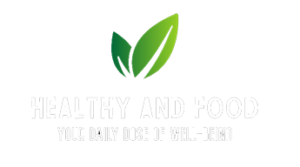In today’s times, almost everything you buy contains some sort of synthetic fiber like polyester, nylon or spandex. There
are those consumers, however, who reject synthetic clothing and insist on wearing only organic cotton clothing. Let’s hope
they like to iron clothes.
Organic cotton clothing can be defined as clothing made from cotton that was grown without insecticides, herbicides or
pesticides and must be cotton that was not genetically modified. In truth, most cotton grown in the world is grown with
pesticides and approximately a quarter of all pesticides in the world are used for cotton growing. This, unfortunately,
accounts for 20,000 deaths per year due to pesticide poisoning in mostly cotton farmers.
Farmers who grow organic cotton, on the other hand, are spared the risk of pesticides and use techniques that are
inexpensive healthy for our ecology and sustainable to the population. These organic farmers use crop rotation and natural
insecticides to grow organic cotton. It’s a more expensive process but many say it’s worth it.
Conventionally grown cotton uses more chemicals per hectare than any other crop worldwide. Many insects have become
resistant to the pesticides used today so more and stronger chemicals need to be applied. This has resulted in pollution
of local soil and water, along with soil erosion that can worsen the situations so that nothing can grow there after a few
years. With organic cotton growing, none of these problems occur.
The use of organic cotton avoids the skin irritation and allergic reactions seen in synthetic fibers or even in cotton
clothing over-treated with pesticides, bleach or detergents. Often those working in the conventional cotton industry are
exposed to toxic insecticides and other chemicals in the cotton itself. To avoid irritation, many people wash their
organic cotton clothing in organic soaps that aren’t irritating to the skin or mucus membranes.
There are clearly established standards for growing organic cotton. There is a specific certification system in place
which uses acceptable standards for growing the organic product and helps consumers know that the product they buy has
been inspected and has been found to be “certified organic”. Those farms growing organic cotton must maintain extensive
records and must be routinely inspected.
There are several international programs designed to certify and protect the integrity of organic cotton and other organic
textiles. One of them is the International Federation of Organic Agriculture Movements and another is the International
Organic Accreditation Services.
Although organic cotton is grown in eighteen different countries, it still makes up for less than 0.1% of the total cotton
produced worldwide. Part of the problem is that the yields of conventional cotton are about three times that of organic
cotton. Fortunately, larger textile companies are taking an interest in organic cotton and the amount of this textile will
likely increase over time.
Currently, consumers can buy organic cotton in the form of clothing for adults and children, home furnishings, healthcare
products, bedding and bath products, table linens, raw fabric, toys, diapers and even paper products. Organic, it seems,
is hitting its stride among consumers and sales should continue to increase.























